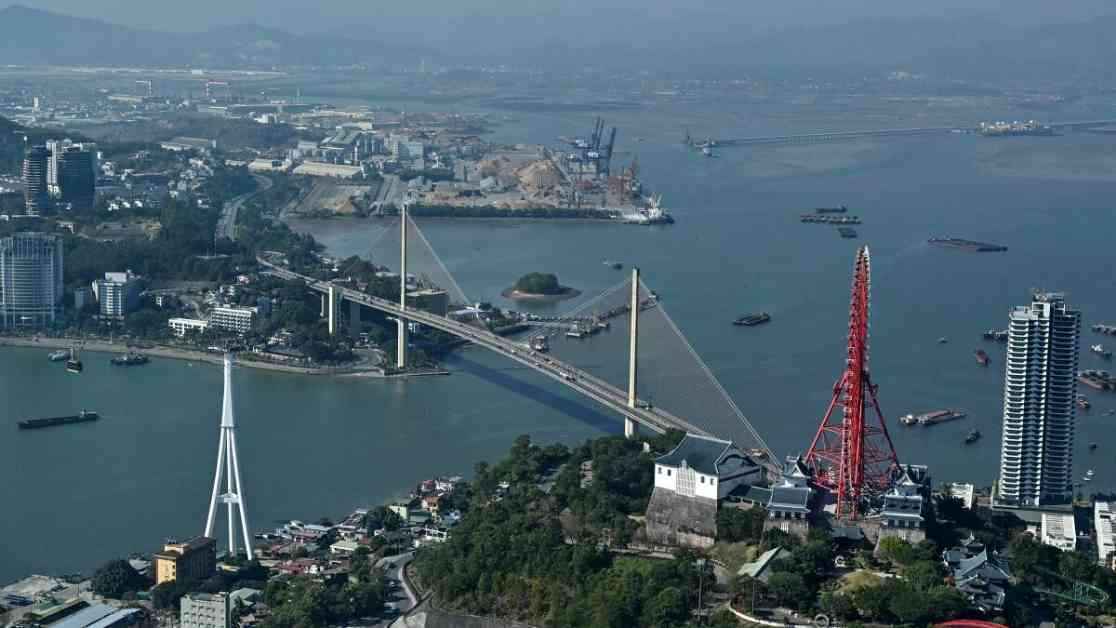Trade Relations Between Vietnam and China: A Complex Economic Dance
In the bustling industrial park of Quang Ninh, Vietnam, Le Ngoc Tham took on the role of sales manager with a clear mission in mind—to create a haven for manufacturers seeking refuge from the escalating trade tensions between the U.S. and China. The idea was to provide a seamless transition for companies looking to avoid the tariffs of the U.S.-Sino trade war by setting up shop in Vietnam. Fast forward three years, and the landscape looks quite different. With less than half of the ambitious 1,716-acre project completed, potential lessees are now hesitating, reevaluating their decisions in light of President Trump’s latest tariff pronouncements.
President Trump’s recent announcement of a 46% tax on imports from Vietnam has sent shockwaves through the country, a significant player in the global trade arena. This move, aimed at Vietnam—ranked as the eighth-largest trading partner of the U.S.—has raised concerns among both buyers and producers. The looming threat of such high tariffs has cast a shadow over the industrial activity and foreign investments that have been instrumental in driving Vietnam’s rapid industrial development and economic growth.
The Impact of Tariffs on Vietnam’s Manufacturing Sector
The implications of these tariffs are far-reaching, with potential ramifications for Vietnam’s booming manufacturing sector, which now contributes more than one-fifth to the country’s GDP. The abrupt nature of these tariffs poses a significant challenge for manufacturers who have invested heavily in the region. The uncertainty surrounding the future of trade relations between Vietnam and the U.S. has left many stakeholders pondering their next move.
As the dust settles on President Trump’s tariff announcements, the implications for Vietnam’s economy become clearer. The 46% tariff rate, if implemented, could render Vietnam-made products uncompetitive in the crucial U.S. market, prompting a shift towards countries with lower tariff rates. This could potentially stall the industrial growth that has been driving Vietnam’s economic ascent over the past decade.
Navigating Turbulent Waters: Vietnam’s Response to Tariffs
In the face of these challenges, Vietnam finds itself at a critical juncture, grappling with the need to adapt to the evolving global trade landscape. The government’s response to the tariff threats has been multifaceted, with overtures to the U.S. in a bid to mitigate the impact of the tariffs. From offering to reduce tariffs on American imports to exploring avenues for increased collaboration, Vietnam is treading a delicate diplomatic tightrope in a bid to safeguard its economic interests.
The Way Forward: Adapting to a Changing Global Landscape
As the future of trade relations between Vietnam and the U.S. hangs in the balance, stakeholders are left to ponder the road ahead. The potential ramifications of the proposed tariffs on Vietnam’s manufacturing sector are significant, with far-reaching implications for the country’s economic growth trajectory. In the face of these challenges, Vietnam’s ability to adapt and innovate will be crucial in navigating the complex economic terrain that lies ahead.
As the global economic landscape continues to evolve, Vietnam finds itself at a crossroads, grappling with the implications of the latest tariff pronouncements. The stakes are high, with the potential for significant disruptions to the country’s manufacturing sector and overall economic growth. In this rapidly changing environment, Vietnam’s ability to navigate the challenges ahead will be a testament to its resilience and adaptability.














